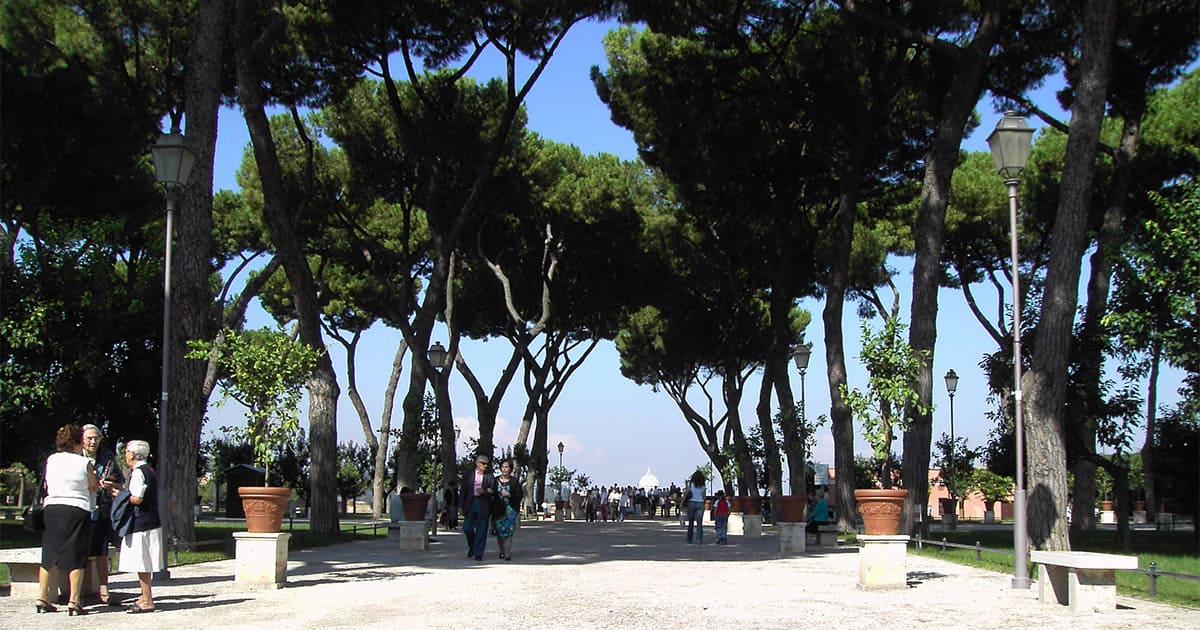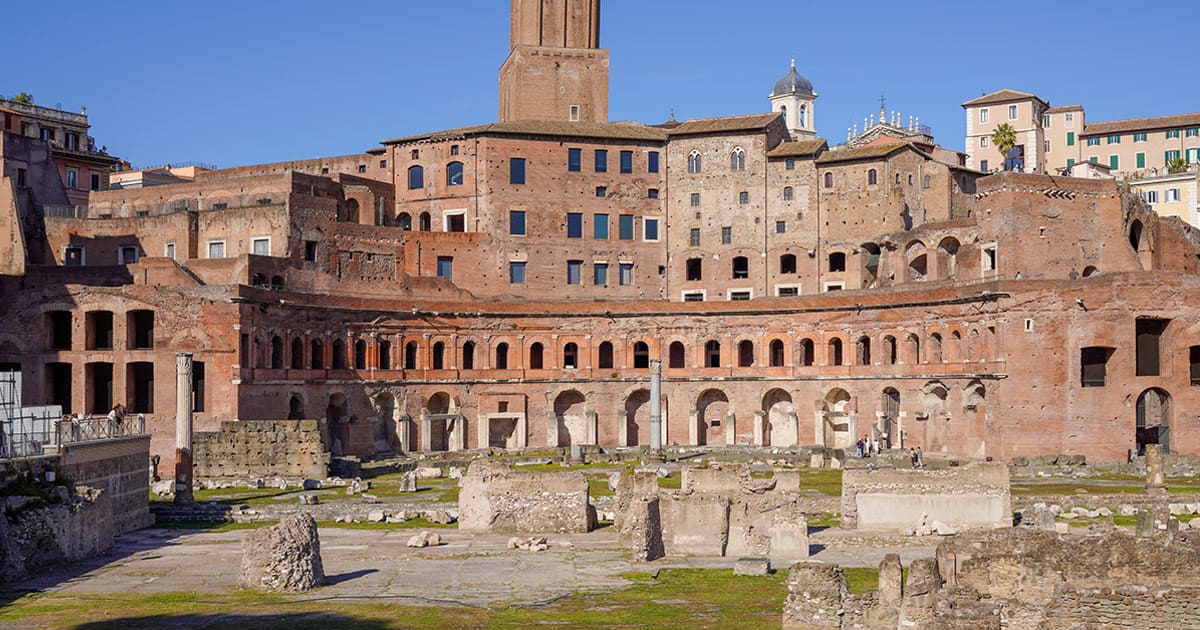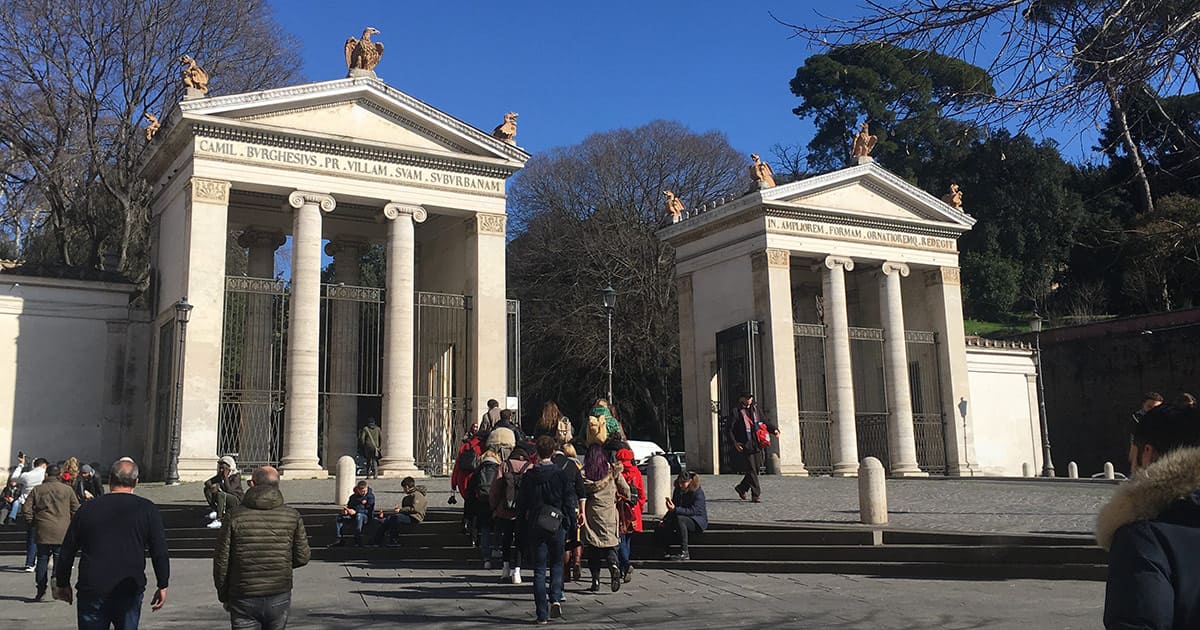Nestled high on the Aventine Hill, the Orange Garden, officially known as Parco Savello, is one of Rome’s most peaceful and picturesque hideaways. With sweeping views across the city, the garden offers a serene escape where nature, history, and architecture coexist in perfect harmony. Visitors are drawn to its tranquil pathways, the scent of bitter orange trees, and its panoramic terrace overlooking the Eternal City.
The best way to enjoy this breathtaking retreat is through an Orange Garden tour by Kirba Tours. Traveling by golf cart allows you to reach this peaceful hill effortlessly while your private guide reveals fascinating stories about the garden’s history and the legends that surround it.
The Origins of Parco Savello
The Orange Garden covers approximately 7,800 square meters and stands on the grounds of the ancient fortress built by the noble Savelli family between 1285 and 1287. This medieval structure, in turn, was constructed over an earlier castle belonging to the powerful Crescentii family in the tenth century. The park, enclosed by the original fortress walls, retains traces of these ancient fortifications that whisper stories of Rome’s past.
The current garden design was created in 1932 by the renowned landscape architect Raffaele De Vico. His goal was to provide the public with an accessible “belvedere,” a new panoramic terrace complementing the iconic viewpoints of the Pincian Hill and the Janiculum. Today, the garden stands as a timeless blend of history, art, and natural beauty.
Legend and Spiritual Symbolism
The garden owes its name to the many bitter orange trees that flourish within its walls. According to legend, Saint Dominic himself planted the first orange tree here, bringing a sapling from Spain during his ministry in Rome. The Dominican monks of Santa Sabina, located next to the garden, later cultivated the area into a peaceful monastery orchard.
Another beloved tale tells that Saint Catherine of Siena once picked oranges from this sacred tree to make candied fruit for Pope Urban VI. Whether legend or truth, these stories have become part of the garden’s charm, intertwining spirituality with nature in a way that reflects Rome’s deep historical layers.
The Design and Atmosphere of the Orange Garden
The layout of the Orange Garden is perfectly symmetrical, guiding visitors along a central avenue that leads directly to the terrace. This path, lined with orange trees and cypresses, opens onto one of Rome’s most iconic views. This unforgettable vista stretches from the Tiber River to the dome of St. Peter’s Basilica.
The avenue is dedicated to beloved Roman actor Nino Manfredi, while the central square honors another local artist, Fiorenzo Fiorentini, who hosted open-air performances in the park for many years. Their names give a cultural touch to the garden’s natural and architectural harmony.
The Fountain and Its Hidden History
The garden’s entrance in Piazza Pietro D’Illiria features a striking fountain composed of two historical elements: an ancient Roman thermal bath and a marble mask sculpted by Giacomo della Porta in 1593. Originally adorning a fountain in the Campo Vaccino cattle market, the mask was later moved multiple times before finding its permanent home here in 1932.
The sculpture’s expressive face has become one of the garden’s distinctive features, greeting visitors as they enter this peaceful refuge above the city’s bustle.
Why Visit the Orange Garden
Beyond its natural beauty, the Orange Garden offers a profound sense of calm rarely found in the city center. It’s a favorite spot for couples, artists, and photographers who come to capture the city’s skyline bathed in golden light. At sunset, the terrace becomes a stage for one of Rome’s most romantic panoramas, with the dome of St. Peter’s shining in the distance.
For travelers seeking a quiet yet inspiring destination, combining a visit to the Orange Garden with a golf cart tour in Rome ensures a truly memorable experience. These tours blend comfort, sustainability, and storytelling, ideal for those who wish to uncover the city’s green spaces, ancient ruins, and scenic viewpoints in one journey.
Plan Your Visit
The garden is open year-round and free to enter, though mornings and late afternoons are the best times to visit for soft light and fewer crowds. Nearby attractions such as the Basilica of Santa Sabina, the Aventine Keyhole, and the Roseto Comunale rose garden make this area one of Rome’s most enchanting itineraries.
Whether you’re drawn by its legends, its citrus scent, or its breathtaking view, the Orange Garden remains a must-see destination for anyone looking to experience the peaceful side of the Eternal City. Let its orange blossoms, quiet paths, and timeless view remind you that even in bustling Rome, serenity is never far away.
By user:Lalupa – Own work, Public Domain, Link




